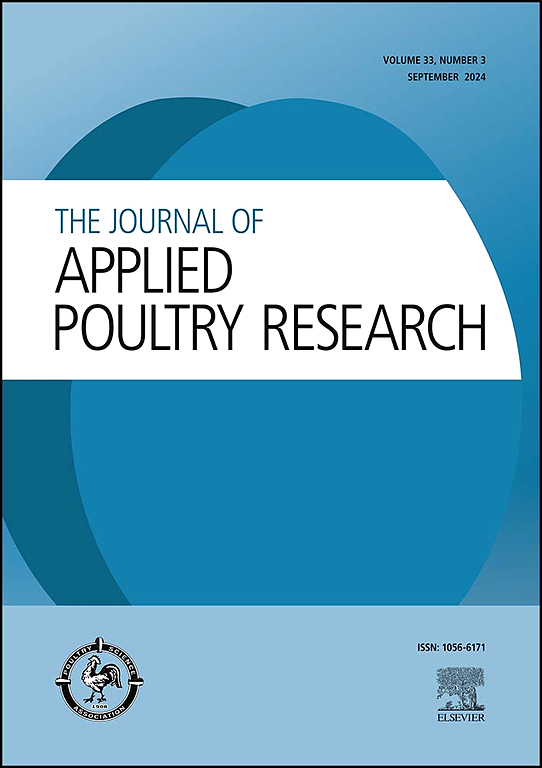可消化钙系统的实施:为什么需要它,我们在哪里?
IF 2
3区 农林科学
Q2 AGRICULTURE, DAIRY & ANIMAL SCIENCE
引用次数: 0
摘要
血钙(Ca)和血磷(P)水平的调节是紧密交织在一起的,需要在饮食中仔细平衡它们的代谢供应。植物性饲料成分中的大部分磷以植酸盐的形式储存,肉鸡对植酸盐的消化能力较差,而无机磷源的消化率也存在显著差异。几十年来,家禽营养学家认识到饲料中磷的消化率是高度可变的,因此在日粮配方中加入了磷。相比之下,家禽日粮仍以总钙(tCa)为基础,忽视了不同日粮来源钙的消化率。对钙消化率的错误假设可能导致钙失衡,这对肉鸡的健康和整体生产性能都有负面影响。此外,还强调了钙和石灰石对植酸酶效率的影响,而植酸酶在通过分解植酸提高磷利用率中起着关键作用。随着家禽业朝着实施可消化钙(dCa)系统的方向发展,石灰石消化率的准确预测方程的发展变得至关重要。这种方法不仅提高了日粮配方的精度,而且通过确保钙和磷的更平衡和代谢有效供应,提高了肉鸡的整体生产性能。向dCa系统过渡,结合植酸酶的使用,是优化营养效率和提高现代家禽生产可持续性的关键一步。本文章由计算机程序翻译,如有差异,请以英文原文为准。
Implementation of a digestible calcium system: Why is it needed and where are we?
The regulation of blood calcium (Ca) and phosphorus (P) levels are closely intertwined, requiring that their metabolically available supply in the diet be carefully balanced. The majority of the P in plant-based feed ingredients is stored as phytate, which is poorly digestible by broilers, while inorganic P sources also show significant variability in digestibility. For decades, poultry nutritionists have incorporated available P in diet formulation, recognizing that the digestibility of P in feedstuffs is highly variable. In contrast, poultry diets are still formulated on a total Ca (tCa) basis, overlooking the variable digestibility of Ca from different dietary sources. Incorrect assumptions regarding the digestibility of Ca can lead to Ca imbalances, which negatively affect both broiler health and overall performance. Furthermore, the influence of Ca and limestone on phytase efficacy, which plays a critical role in enhancing P availability by breaking down phytate, is highlighted. As the poultry industry moves towards implementing a digestible Ca (dCa) system, the development of accurate prediction equations for limestone digestibility becomes essential. Such an approach not only improves the precision of diet formulation but also enhances overall broiler performance by ensuring a more balanced and metabolically available supply of both Ca and P. Transitioning to a dCa system, in conjunction with phytase use, represents a critical step in optimizing nutrient efficiency and improving sustainability in modern poultry production.
求助全文
通过发布文献求助,成功后即可免费获取论文全文。
去求助
来源期刊

Journal of Applied Poultry Research
农林科学-奶制品与动物科学
CiteScore
4.10
自引率
10.50%
发文量
80
审稿时长
104 days
期刊介绍:
The Journal of Applied Poultry Research (JAPR) publishes original research reports, field reports, and reviews on breeding, hatching, health and disease, layer management, meat bird processing and products, meat bird management, microbiology, food safety, nutrition, environment, sanitation, welfare, and economics. As of January 2020, JAPR will become an Open Access journal with no subscription charges, meaning authors who publish here can make their research immediately, permanently, and freely accessible worldwide while retaining copyright to their work. Papers submitted for publication after October 1, 2019 will be published as Open Access papers.
The readers of JAPR are in education, extension, industry, and government, including research, teaching, administration, veterinary medicine, management, production, quality assurance, product development, and technical services. Nutritionists, breeder flock supervisors, production managers, microbiologists, laboratory personnel, food safety and sanitation managers, poultry processing managers, feed manufacturers, and egg producers use JAPR to keep up with current applied poultry research.
 求助内容:
求助内容: 应助结果提醒方式:
应助结果提醒方式:


